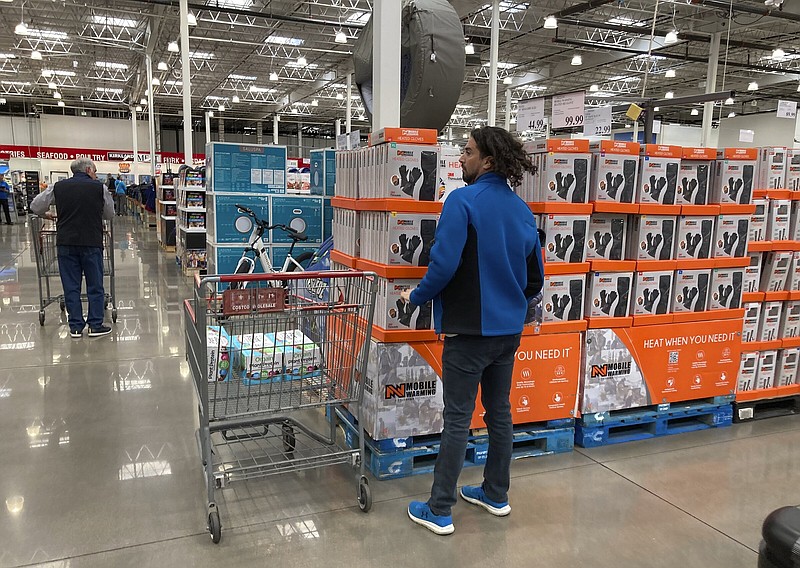Consumers will spend more this Christmas shopping season than they did last year despite economic uncertainties, a retail industry group said Thursday.
The National Retail Federation predicts that U.S. spending this year will grow between 6% and 8% over the same period in 2021 to top out between $942.6 billion and $960.4 billion.
That projected growth is about half of last year's record-breaking seasonal sales growth of 13.5%, to $889.3 billion. But the figures for 2020 and 2021 were unusual because of the pandemic and consumers' changing spending habits, said Jack Kleinhenz, the federation's chief economist.
To put those numbers into perspective, the federation said Christmas retail sales over the past 10 years have grown on average about 5%, with pandemic spending in the past two years accounting for considerable gains.
Some shoppers last year still had stimulus funds and unemployment benefits to spend on Christmas gifts and decor.
This year, though, that money is gone, prices have risen and many pundits say the country is on the verge of recession.
Still, "consumers remain resilient and continue to engage in commerce," said Matthew Shay, the trade group's president and chief executive. "In the face of these challenges, many households will supplement spending with savings and credit," he said, especially those with lower and middle incomes.
"We know retailers are prepared to deliver great value this year," Shay said, "and this is the time of year consumers have planned for and saved for."
The National Retail Federation defines the Christmas shopping season as running between Nov. 1 and Dec. 31. Its figures exclude sales of gasoline and cars, as well as spending at restaurants.
The group also expects that online and other non-store sales, which are included in the total, will increase between 10% and 12%, or between $263 billion and $268 billion.
That's up from $239 billion last year, "which saw extraordinary growth in digital channels as consumers turned to online shopping to meet their holiday needs during the pandemic," the National Retail Federation said in a news release.
Because of the November and December time span that the group focuses on, Kleinhenz said, "our forecast may differ from others."
And other researchers may also release their predictions sooner.
Deloitte, which published its annual Christmas spending forecast on Sept. 13, adopted a more conservative outlook than that of the National Retail Federation.
Deloitte's retail and consumer products division expects Christmas season sales to grow between 4% and 6%. Because the company includes January sales in its forecast, that translates to about $1.46 trillion.
In 2021, the company said, Christmas sales during the November-through-January period increased 15%.
Despite its modest expectations for overall spending this year, Deloitte, like the National Retail Federation, also foresees strong e-commerce sales. The company expects online sales will grow by 12.8% to 14.3%, or between $260 billion and $264 billion.
The lower projected growth for the 2022 Christmas season "reflects the slowdown in the economy this year, said Daniel Bachman, Deloitte's U.S. economic forecaster.
Also, retail sales will continue to shift from durable consumer goods, which led spending during the pandemic, to consumer services such as restaurants, Bachman said.
"Inflation will also help raise dollar sales," Bachman said, "although retailers will see less growth in sales volume."

